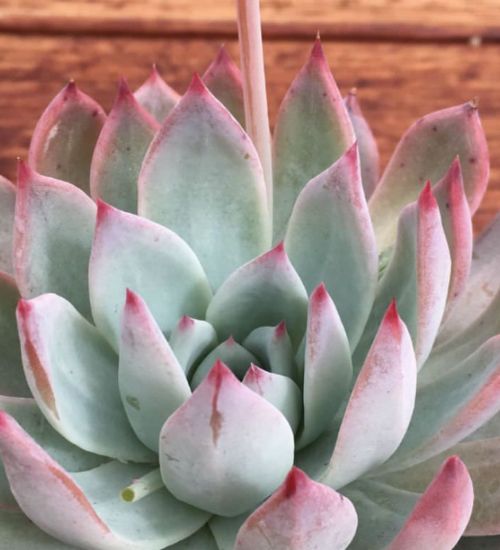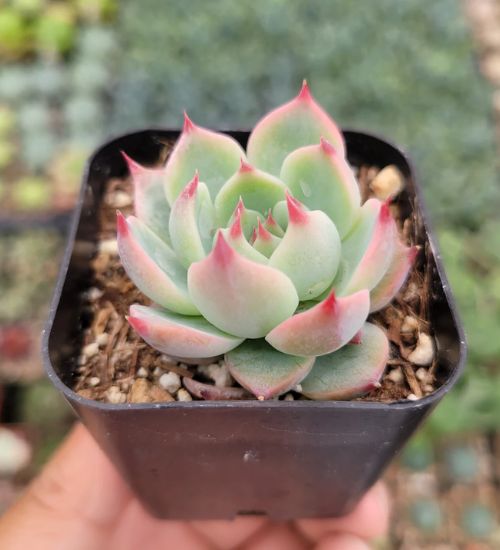Sun: full sun to partial shade
Water: Typical water needs for a succulent
Temperature: Zone 9a from 20° F to 25° F (-6.7 ° C to -3.9° C)
Winter Survival: Not cold hardy
Propagation: leaves, offsets, cuttings
Flower: in the late summer and early fall
Flower Type:
Toxic: Generally non-toxic to humans and animals
Dormant: winter
Space Requirement: Indoors & Outdoors
Common Problems: No major pests, Plants may rot if overwatered
Where to buy Echeveria colorata?
Basc Care for Echeveria colorata
Watering
What you need to remember is that this type of succulents needs to be watered for every 2 weeks
Can you water your succulent more than what its need? The answer is yes and no. In extreme conditions, you can water your plants more often when you notice the soil is completely dry.
Fertilizing
Only feed this succulent during its active growing seasons which means winter. Use the right fertilizer applied in the right amounts. Applying half-strength balanced fertilizer every month or so is recommended for optimal results.
Do not fertilize during winter as the plant is dormant.
Sun & Location Requirements for "Echeveria colorata"
Echeveria colorata does best when placed in an area that receives full sun to partial shade throughout the day. This variety of succulents can tolerate direct sunlight for short periods, but if the temperatures get too high or the light is too intense it may be beneficial to find a shadier spot.
When temperatures drop below freezing, it is important to take precautions to protect Echeveria colorata from the cold. Insulating and providing adequate drainage for the plant are key elements in helping it survive winter weather. Wind and sun exposure should also be minimized to prevent frost damage.
Any succulents in the group will need a medium space to grow. You can place your pot at your table or window. Since this plant needs more space than mini succulents, you should consider do not plant them together with other succulents/plants.
Echeveria colorata also benefits from some indirect light throughout the day as well, so make sure you give it enough space to soak up light without becoming too exposed to heat.
Propagation
Propagating succulents with leaves is a satisfying way to obtain new plants. Start by cutting some healthy leaves from the mother plant, then place them on top of potting mix and water regularly. In time you'll have vibrant succulents that you grew yourself!
One way to propagate Echeveria colorata is by offsets. Taking an offset from the mother plant and potting it into soil will give you a brand new succulent with minimal effort.
One way to propagate Echeveria colorata is by cutting
Toxicity

Echeveria colorata is not known to pose any significant health risks, as it is not considered to be toxic. However, it is best to keep the plant away from young children and pets, as they may ingest some of the parts of this plant that could contain toxins which can cause mild skin irritation.
Pests and Diseases
Echeveria colorata is not affected too much by common pests and diseases like most of the other succulents.
It may get attacked by %pest_names%. To prevent this from happening, keep your succulent in a well-ventilated area and check it regularly for any signs of pests or health problems. If you do spot any, treat the plant using below methods.
%pest_treatment_methods%


